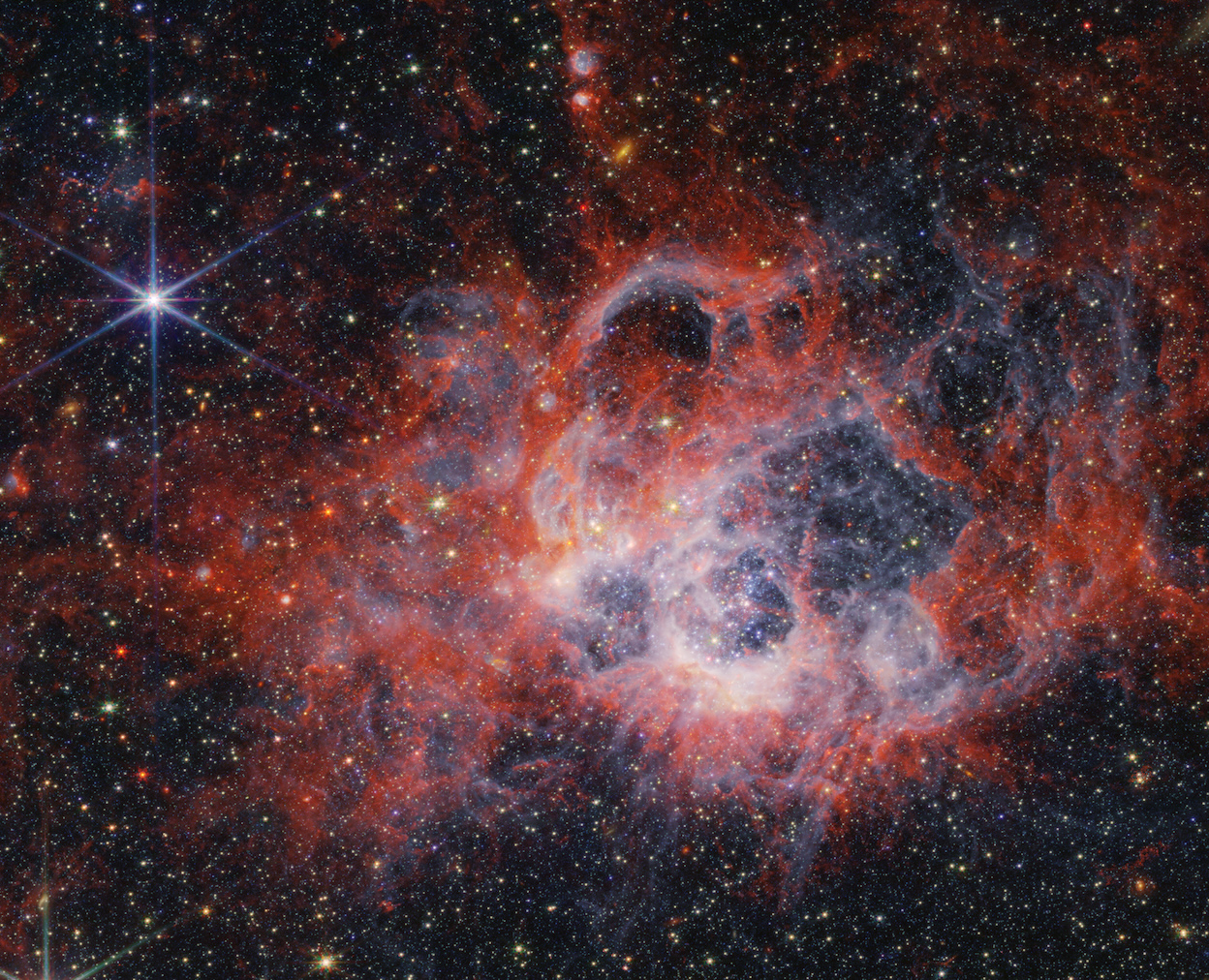This image from NASA’s James Webb Space Telescope’s NIRCam (Near-Infrared Camera) of star-forming region NGC 604 shows how stellar winds from bright, hot young stars carve out cavities in surrounding gas and dust.
NASA, ESA, CSA, STScI
In this image released on March 9, 2024, the NIRCam (Near-Infrared Camera) on NASA’s James Webb Space Telescope gives us a more detailed view of a well-studied but still mysterious region, NGC 604. The most noticeable features are tendrils and clumps of emission that appear bright red, extending out from areas that look like clearings, or large bubbles in the nebula. Stellar winds from the brightest and hottest young stars have carved out these cavities, while ultraviolet radiation ionizes the surrounding gas. This ionized hydrogen appears as a white and blue ghostly glow.
Image Credit: NASA, ESA, CSA, STScI
这张来自NASA詹姆斯·韦伯太空望远镜NIRCam(近红外相机)的恒星形成区NGC 604的图像显示了明亮、炽热的年轻恒星发出的恒星风如何在周围的气体和尘埃中形成空洞。
影像来源: NASA, ESA, CSA, STScI
在2024年3月9日发布的这张照片中,NASA詹姆斯·韦伯太空望远镜上的NIRCam(近红外相机)为我们展示了一个被广泛研究但仍然神秘的区域NGC 604的更多细节。最明显的特征是呈鲜红色的蔓状和簇状发射物,它们从看起来像空地或星云中的大气泡的区域延伸出来。来自最亮、最热的年轻恒星的恒星风雕刻出了这些空洞,同时紫外线辐射使周围的气体电离。这些电离氢呈现出白色和蓝色的幽光。
了解更多有关这张图片以及韦伯中红外成像仪(MIRI)拍摄的同一区域的另一张图片的信息。
影像来源: NASA, ESA, CSA, STScI







